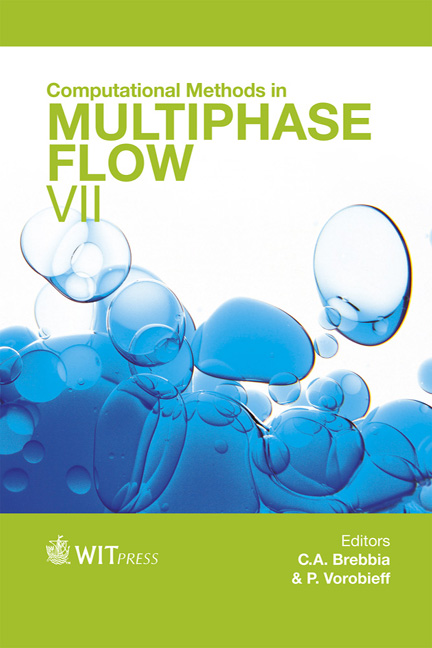Rupture Of Thin Liquid Films Under The Influence Of External Heat Flux
Price
Free (open access)
Transaction
Volume
79
Pages
12
Page Range
183 - 194
Published
2013
Size
2546 kb
Paper DOI
10.2495/MPF130161
Copyright
WIT Press
Author(s)
K. V. Meredith & J. de Vries
Abstract
A thin liquid film completely covering a solid surface has the potential to rupture into rivulets when exposed to external heat flux due to thermocapillary instabilities and vaporization. This has implications for many industrial applications, but particularly for fire suppression. Film rupture drastically reduces the wetted surface area thereby exposing the solid surface to large incident heat fluxes. Recently, a computational fluid dynamics (CFD) model–FireFOAM–has been developed for simulating fire suppression phenomena. The purpose of this study is to investigate and validate FireFOAM’s thin film model for predictions of critical heat flux required to induce film rupture. To that extent, vertically flowing film experiments with flow rates ranging form 8.7 g/m/s to 41.3 g/m/s and external heat flux extending from 5 kW/m2to 45 kW/m2 have been simulated. The film heats up non-uniformly and eventually ruptures due to thermocapillary instabilities. Dry regions are formed on the panel as the film pulls together as rivulets. For a given flow rate, the radiative heat flux was varied to identify the ‘critical heat flux’. Good qualitative and quantitative match was achieved between model and experiments. At the lower flow rates, even a slight incident heat flux would cause the film to break into rivulets. As the flow rate increased, stronger and stronger heat flux values were necessary to cause film rupture. At very high flow rates, the film remained continuous over the range of heat flux tested. Film rupture was shown to be sensitive to the film inlet conditions. Keywords: fire suppression, computational fluid dynamics, thin-film assumption, partial wetting, contact line, critical heat flux, conjugate heat transfer.
Keywords
Keywords: fire suppression, computational fluid dynamics, thin-film assumption,partial wetting, contact line, critical heat flux, conjugate heat transfer.





